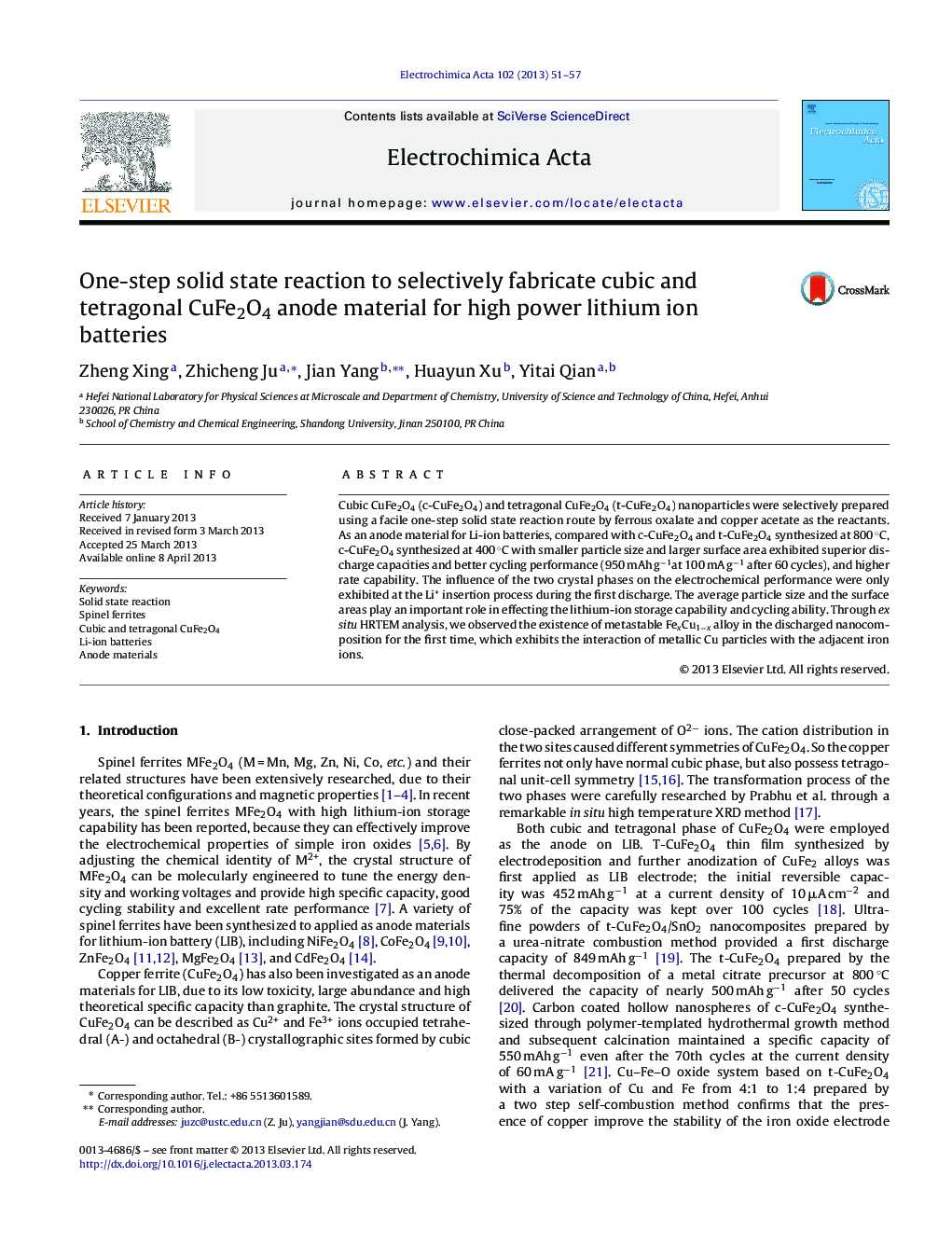| Article ID | Journal | Published Year | Pages | File Type |
|---|---|---|---|---|
| 187255 | Electrochimica Acta | 2013 | 7 Pages |
•Pure cubic and tetragonal CuFe2O4 nanocrystals.•C- and t-CuFe2O4 exhibit similar electrode reactions except the first cycle.•C-CuFe2O4 shows superior capacity and rate capability.•FexCu1−x alloy in the discharged electrode were observed for the first time.
Cubic CuFe2O4 (c-CuFe2O4) and tetragonal CuFe2O4 (t-CuFe2O4) nanoparticles were selectively prepared using a facile one-step solid state reaction route by ferrous oxalate and copper acetate as the reactants. As an anode material for Li-ion batteries, compared with c-CuFe2O4 and t-CuFe2O4 synthesized at 800 °C, c-CuFe2O4 synthesized at 400 °C with smaller particle size and larger surface area exhibited superior discharge capacities and better cycling performance (950 mAh g−1at 100 mA g−1 after 60 cycles), and higher rate capability. The influence of the two crystal phases on the electrochemical performance were only exhibited at the Li+ insertion process during the first discharge. The average particle size and the surface areas play an important role in effecting the lithium-ion storage capability and cycling ability. Through ex situ HRTEM analysis, we observed the existence of metastable FexCu1−x alloy in the discharged nanocomposition for the first time, which exhibits the interaction of metallic Cu particles with the adjacent iron ions.
Graphical abstractCubic CuFe2O4 and tetragonal CuFe2O4 nanoparticles were selectively prepared and exhibit good performance for Li-ion batteries.Figure optionsDownload full-size imageDownload as PowerPoint slide
